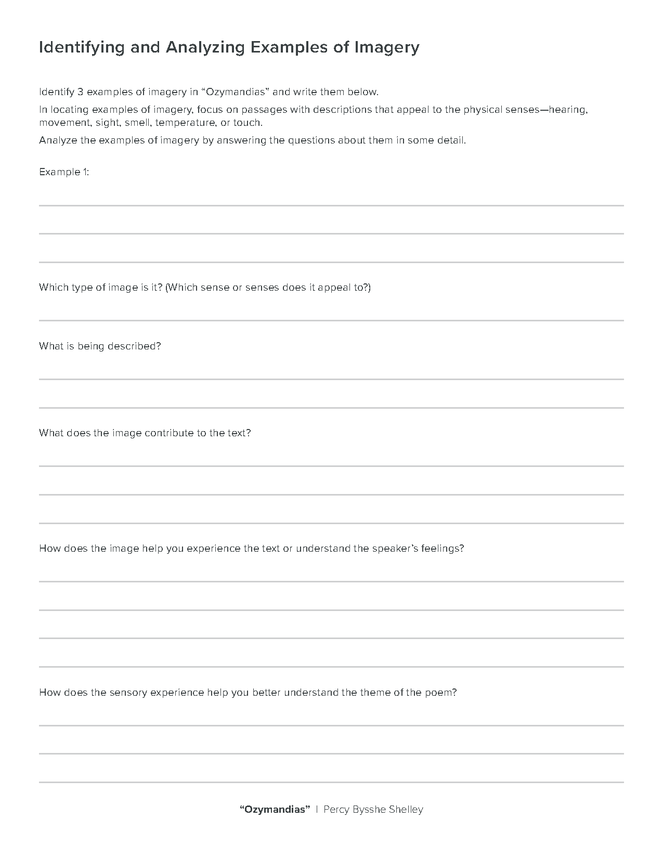

Shelley says nothing about the rest of the face he describes only the mouth, with its “frown,/And wrinkled lip, and sneer of cold command.” Cold command is the emblem of the empire-building ruler, of the tyrannical kind that Shelley despised. The visage is taken apart by the poet, who collaborates with time’s ruinous force. Are these fragmentary legs all that is left?Īfter this pause, Shelley’s poem describes a “shattered visage,” the enormous face of Ozymandias.

The sonnet comes to a halt in the middle of its first quatrain. Column-like legs but no torso: the center of this great figure, whoever he may have been, remains missing. The first image that we see is the “two vast and trunkless legs of stone” in the middle of a desert. The reader encounters Shelley’s poem like an explorer coming upon a strange, desolate landscape. The “I” quickly fades away in favor of a mysterious “traveler from an antique land.” This wayfarer presents the remaining thirteen lines of the poem. The poem begins with the word “I”-but the first person here is a mere framing device. “Ozymandias” has an elusive, sidelong approach to its subject. Though Ozymandias believes he speaks for himself, in Shelley’s poem his monument testifies against him. Here, as in the case of “Ozymandias,” the inert fact of the monument displaces the presence of the dead person it commemorates: the proud claim is made on behalf of art (the tomb and its creator), not the deceased. In the Greek Anthology (8.177), for example, a gigantic tomb on a high cliff proudly insists that it is the eighth wonder of the world. In addition to the Diodorus passage, Shelley must have recalled similar examples of boastfulness in the epitaphic tradition. Smith produced a now-forgotten poem with the unfortunate title “On a Stupendous Leg of Granite, Discovered Standing by Itself in the Deserts of Egypt, with the Inscription Inserted Below.” Shelley’s contribution was “Ozymandias,” one of the best-known sonnets in European literature. Stimulated by their conversation, Smith and Shelley wrote sonnets based on the passage in Diodorus. If any want to know how great I am and where I lie, let him outdo me in my work.” (The statue and its inscription do not survive, and were not seen by Shelley his inspiration for “Ozymandias” was verbal rather than visual.) Diodorus reports the inscription on the statue, which he claims was the largest in Egypt, as follows: “King of Kings Ozymandias am I. Shelley and Smith remembered the Roman-era historian Diodorus Siculus, who described a statue of Ozymandias, more commonly known as Rameses II (possibly the pharaoh referred to in the Book of Exodus). The power of pharaonic Egypt had seemed eternal, but now this once-great empire was (and had long been) in ruins, a feeble shadow. In the wake of Napoleon’s conquest of Egypt in 1798, the archeological treasures found there stimulated the European imagination.

One evening, they began to discuss recent discoveries in the Near East. Shelley’s friend the banker Horace Smith stayed with the poet and his wife Mary (author of Frankenstein) in the Christmas season of 1817.


 0 kommentar(er)
0 kommentar(er)
